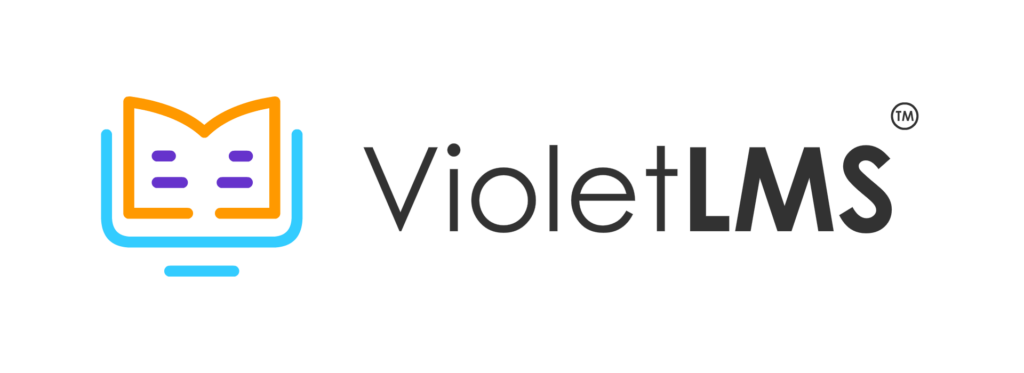An LMS, or learning management system, can be defined as a type of software that allows users to build, share, automate, and manage online courses. The transition from traditional on-premises Learning Management Systems (LMSs) to cloud-based solutions, specifically (Software as a Service) SaaS LMS, represents an important evolution in the ever-changing field of employee training and development. Employee engagement may be hampered by obsolete and tedious learning systems, which may lead companies to adopt more effective and efficient solutions. The learning management system is a unique solution that has emerged from the learning and development sector’s resilience, which has been fueled by leaders’ passion for training and the variety of online tools.
It is referred to as an LMS and acts as a central location for planning, organizing, carrying out, and evaluating learning initiatives. The two most common LMS types discussed in this article are self-hosted LMS and SaaS LMS. If you’re new to the LMS learning management system or considering making the move to a cloud-based approach, read on for a thorough understanding of the SaaS LMS.
What is SaaS?
Software as a service, or SaaS, is a software delivery model based on the cloud where apps are hosted by a cloud provider and made readily available to end users via the Internet. In simple terms, it’s the practical side of cloud computing. Instead of hosting software locally, companies pay a subscription fee to access these applications effortlessly on the cloud. It’s a streamlined approach that enhances accessibility without the hassle of local hosting. A SaaS LMS allows your training system software to live on remote servers. Rather than managing these systems in-house, the software company is responsible for maintenance and security. As a result, you can access the LMS from anywhere without having special software installed on your computer or device.
You can use the software of your choice without being restricted to using it on a computer or needing to be in a certain place. Applications, file sharing, eCommerce, collaboration, and learning management systems are just a few of the industries that use SaaS. By sharing software, users can increase availability and reduce costs. SaaS is very competitive due to these advantages, and standalone software is quickly disappearing.
What is a SaaS LMS?
Before getting to know SaaS LMS, firstly take a quick look at LMS.
- An LMS helps to create and manage online learning resources, like courses that people in the workforce can complete at their own pace. The company can sell a corporate training program to a client as well as train other companies and manage employee training through the use of an LMS.
- A SaaS LMS is a learning management system that adheres to the SCORM (Sharable Content Object Reference Model) standards and is accessible through a cloud-based subscription model. This cloud-based learning management system has revolutionized eLearning. In the pre-cloud era, companies had to invest heavily in software and server installations for training. However, with a SaaS learning platform, organizations save both money and human resources on the technical aspects of training. By subscribing to systems hosted by LMS vendors, companies can seamlessly embrace online learning without the burden of internal system management.
- In contrast to traditional LMS, SaaS cloud based LMS operates online, eliminating the need for individual device installations. It offers seamless access and scalability based on business requirements, with pricing tied to actual usage, ensuring cost-effectiveness. This popular learning solution requires no specific hardware or software installations; users log in via a web portal for immediate access to features and courses. SaaS LMSs are easy to implement, low-maintenance, secure, and configurable, streamlining employee training, performance monitoring, and enhancing learning outcomes – all in one centralized platform
SaaS vs. hosted LMS
Self-hosted and SaaS-based learning management systems (LMS) are the two primary choices available to businesses for delivering their e-learning solutions or corporate training programs. Both solutions seek to provide online training, but they differ significantly from one another.
Self-hosted LMS:
Self-hosted LMS is a platform that calls for hardware or software installation on the servers of the business. Because the platform is hosted in-house and on-site, learners can only access it with specific software installed.
Hosted LMS systems require more maintenance than cloud hosted LMSs, which demands internal upkeep and updates from businesses. This procedure takes a lot of time and resources, which frequently results in exorbitant costs for companies. Furthermore, internal teams in charge of self-hosted platforms encounter difficulties when it comes to accommodating an increasing number of users, which requires careful monitoring of activity and storage. Implementing updates across multiple devices can be even more complex for larger businesses with a large workforce.
SaaS LMSs:
Technical work for businesses is handled by SaaS LMS since the provider manages the platform on its servers. When it comes to features, they have the same LMS features as self-hosted solutions. It’s an easy user experience for managers and learners- they just need to log in and get started. Furthermore, the majority of SaaS LMS providers provide comprehensive support to swiftly and simply handle any technical problems.
SaaS LMS solutions provide APIs (Application Programming Interfaces) for seamless integration with various systems, including HR software, content management systems, and e-commerce platforms, offering flexibility and rapid scalability as companies expand.
In brief, SaaS is a proficient option if your business requires an LMS that expands with you. These platforms are adaptable and can quickly grow with you from 1,000 users to 10,000+. Although self-hosted platforms can grow, as the number of users rises, your internal team must manage activity and storage.
Having grasped the precise distinctions between SaaS LMS and Hosted LMS, let’s explore some essential SaaS LMS features:
Features of SaaS LMS
- Intuitive and easy-to-use user interface.
- Admins and training managers will be able to create and upload courses with ease concerning the course management functionality.
- Encourage a variety of learning materials, such as texts, videos, and quizzes, to enhance the learning process.
- Functionality for tracking and reporting to monitor the development of learners.
- Features of collaborative learning.
- Compatibility with mobile devices so that students can use the resources from a variety of devices while they’re on the go.
- Interfaces with additional tools, such as HR software or applications for video conferences.
- Leaderboards and badges are a few instances of gamification and engagement features.
- Course performance analytics to help instructors make their instruction better.
Benefits of SaaS LMS
After learning the basic characteristics of a SaaS-based learning platform and the rationale behind its widespread use, you may be curious about the advantages of making an investment in a SaaS learning platform. Business implementing corporate training program can benefit significantly from SaaS learning management systems.
Cloud-based
With a cloud-based SaaS LMS, learners can access training anytime and from any place. An LMS that is cloud-based is an easy and convenient way to learn, regardless of the device type that the learner prefers to use – laptop, desktop, or smartphone. All they require to get going is an internet connection!
Quick development
An LMS used to take ages to launch and deploy, but those days are past. A cloud learning management system makes it feasible to present corporate learning and online courses to audiences without unnecessary delays.
You don’t need a highly skilled IT task force to manage the process when you can quickly start learning with a cloud SaaS. As all of the infrastructure for a SaaS LMS is pre-built, there is nothing to install or construct from scratch. Your online courses can launch more swiftly with less time required before deployment. Businesses benefit from this by saving time and money.
Scalability
In addition to cultivating talent, adding more learners, training programs, and learning pathways increases revenue. High scalability is provided by a SaaS LMS because the infrastructure is already in place. Even as your audience grows, the quality of the learning process for the learners remains intact. A leading SaaS LMS provider makes sure that the infrastructure and platform are able to adapt to the ever-changing needs of the market. On a technical level, the LMSs architecture is designed to ensure that it won’t experience any issues when the volume of customer training increases. Because scalability is inherent, you won’t have to worry about system upgrades. Simply update your plan or subscription.
Flexibility
Every company in today’s competitive marketplace needs its staff to be well-versed in the most recent developments in the field. And a cloud based LMS is a perfect match for the task. Similarly, audiences of today are accustomed to mobile learning and will anticipate it from their employee training programs. In contrast to hosted learning management systems, modern SaaS-based learning solutions are accessible to students through PCs, tablets, smartphones, and other devices, allowing users to retrieve the content at any moment that suits them best. Your students are in the clear as long as they have an internet connection. Audiences who are constantly on the go, travelling for work, or simply wish to train after hours can now reach a wider audience.
Smooth integrations
Using APIs or tools like Zapier, many SaaS LMSs integrate with external systems, facilitating the seamless integration of your training with CRMs, HRMs, webinar platforms, and Salesforce. The manual administrative tasks involved in running your training programs will significantly decrease once you’re connected to a tool. By automating tasks like data synchronization, user creation and access, and enrollments, you can free up more time to provide efficient training. This is now easier to access than before simply due to the SaaS-based LMSs readily available APIs, which also facilitate effective system communication.
Quick updates and upgrades
A primary factor in the increasing use of cloud-based SaaS LMSs is the ease and regularity of data updates. You don’t have to be concerned about system problems or downtime because the vendor takes care of maintenance. Your learning system automatically incorporates new or updated features, allowing you to concentrate on creating training initiatives that are effective and yield results.
Backups and security
A lot of SaaS learning management systems come with security features that safeguard both the cloud-based platform and the data you store on it. A SaaS LMS provider must adhere to industry standards for data privacy and cloud security. A few examples of third-party certifications are the EU’s General Data Protection Regulation (GDPR) compliance, IS0 27001 with Certification Europe, and Service Organization Control (SOC) 2 certification. There is no good or bad LMS provider choice when it comes to training. The most common option is a SaaS LMS, but ultimately it comes down to the training requirements of your company.
Is a SaaS LMS always the best choice?
Your company’s training needs, and available resources will determine whether a SaaS learning management system is the best option. The main distinction between self-hosted and SaaS options is the degree of control over usability.
Here are a few scenarios in which it might be more beneficial to host your system rather than use a cloud-based solution.
- Your security concerns: It might make sense for you to host the LMS internally if your business is storing sensitive data on it.
- Your curriculum is unique: You may choose internal hosting if your training needs exclusive content or customized features.
- Additional software integration is required: To collaborate with the particular software you use internally, you might need your training. You may need to choose a privately hosted LMS if SaaS solutions don’t integrate with the tools, you already use.
Conclusion
The move from traditional Learning Management Systems (LMSs) to cloud-based SaaS LMS is a game-changer in employee training. With its user-friendly and cost-effective approach, it also streamlines learning and enhances engagement. It offers a centralized platform for efficient planning, organization, and evaluation of training initiatives. The decision between SaaS and self-hosted LMS depends on factors like security, curriculum uniqueness, and software integration needs. SaaS LMS, known for scalability, flexibility, and quick updates, is a beneficial choice for companies aiming to expand their training programs efficiently. Violet LMS is a prime example of an option in this field that offers these benefits. Ultimately, the choice should align with your company’s specific training needs and available resources.


